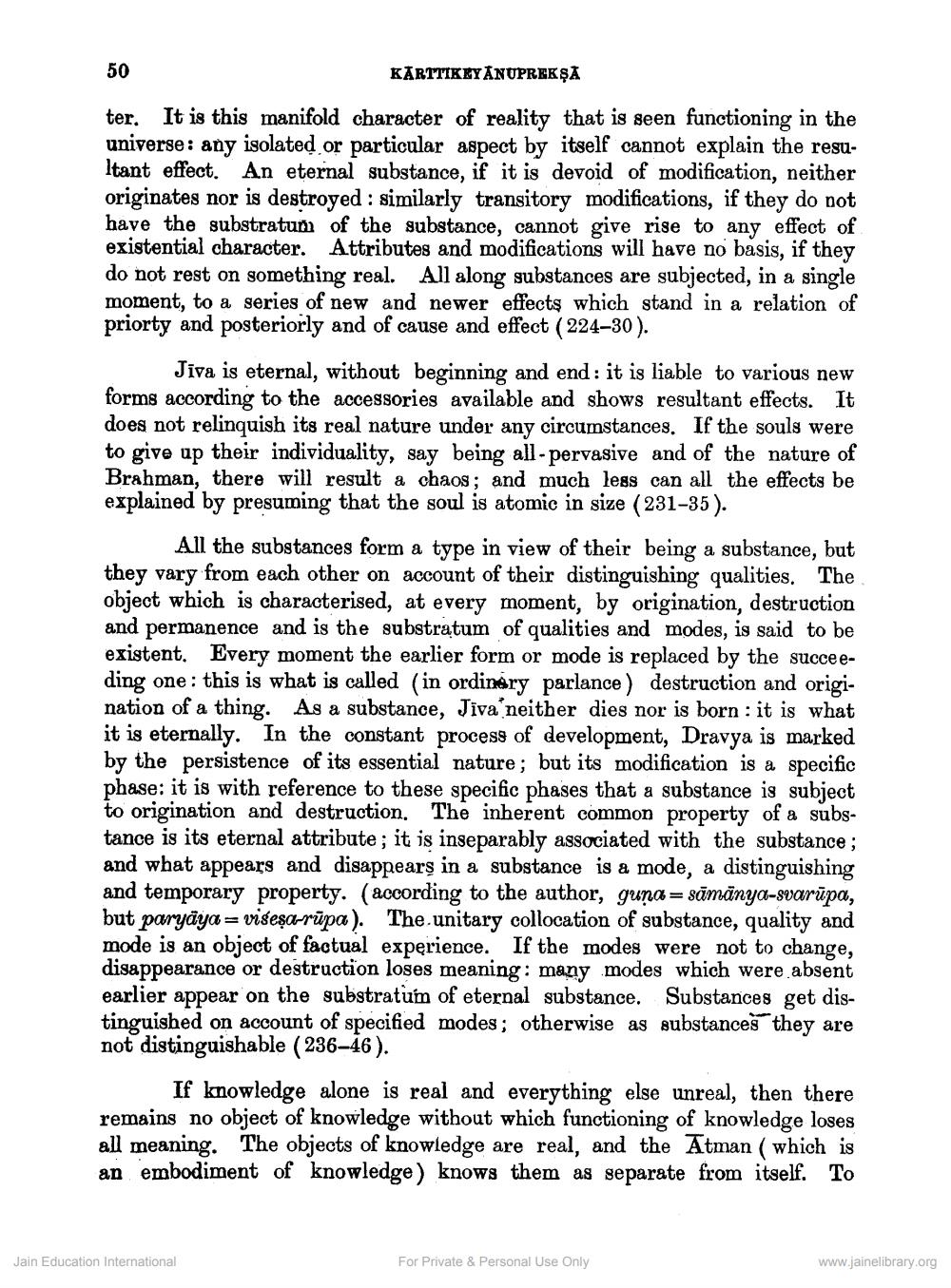________________
KARTTIKEYANUPREKŞA
ter. It is this manifold character of reality that is seen functioning in the universe: any isolated or particular aspect by itself cannot explain the resultant effect. An eternal substance, if it is devoid of modification, neither originates nor is destroyed: similarly transitory modifications, if they do not have the substratum of the substance, cannot give rise to any effect of existential character. Attributes and modifications will have no basis, if they do not rest on something real. All along substances are subjected, in a single moment, to a series of new and newer effects which stand in a relation of priorty and posteriorly and of cause and effect (224-30).
50
Jiva is eternal, without beginning and end: it is liable to various new forms according to the accessories available and shows resultant effects. It does not relinquish its real nature under any circumstances. If the souls were to give up their individuality, say being all-pervasive and of the nature of Brahman, there will result a chaos; and much less can all the effects be explained by presuming that the soul is atomic in size (231-35).
All the substances form a type in view of their being a substance, but they vary from each other on account of their distinguishing qualities. The object which is characterised, at every moment, by origination, destruction and permanence and is the substratum of qualities and modes, is said to be existent. Every moment the earlier form or mode is replaced by the succeeding one: this is what is called (in ordinary parlance) destruction and origination of a thing. As a substance, Jiva neither dies nor is born: it is what it is eternally. In the constant process of development, Dravya is marked by the persistence of its essential nature; but its modification is a specific phase: it is with reference to these specific phases that a substance is subject to origination and destruction. The inherent common property of a substance is its eternal attribute; it is inseparably associated with the substance; and what appears and disappears in a substance is a mode, a distinguishing and temporary property. (according to the author, guna samanya-svarūpa, but paryaya viseṣa-rupa). The unitary collocation of substance, quality and mode is an object of factual experience. If the modes were not to change, disappearance or destruction loses meaning: many modes which were absent earlier appear on the substratum of eternal substance. Substances get distinguished on account of specified modes; otherwise as substances they are not distinguishable (236-46).
If knowledge alone is real and everything else unreal, then there remains no object of knowledge without which functioning of knowledge loses all meaning. The objects of knowledge are real, and the Atman (which is an embodiment of knowledge) knows them as separate from itself. To
Jain Education International
For Private & Personal Use Only
www.jainelibrary.org




